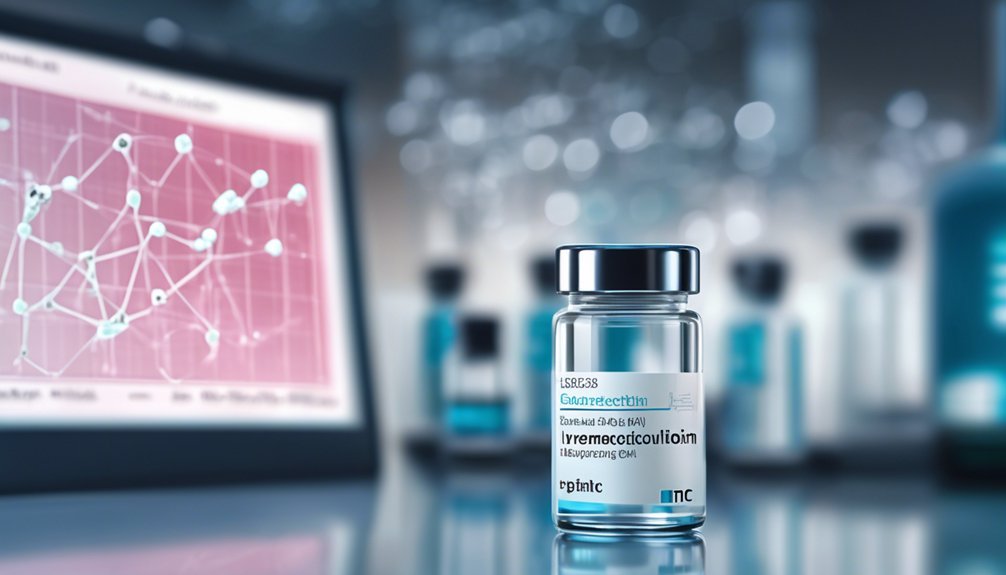When it comes to cancer therapy, grasping the significance of pH levels is key. Imagine a world where a simple shift in acidity or alkalinity could tip the scales in favor of treatment effectiveness. Understanding how pH impacts cancer cells might just be the missing puzzle piece in your journey to comprehending the complexities of cancer therapy.
Key Takeaways
- pH impacts cancer metabolism and treatment response.
- Acidic environments promote cancer growth and resistance.
- Alkaline environments enhance treatment effectiveness.
- pH balancing strategies through diet and lifestyle modifications are crucial.
- Understanding pH is essential for personalized cancer therapies.
Importance of Ph in Cancer
The importance of pH in cancer can't be overstated. Tumor microenvironment plays a crucial role in cancer progression, and pH levels within this environment significantly impact cellular metabolism. Research has shown that the acidic nature of the tumor microenvironment not only promotes cancer cell growth but also contributes to treatment resistance. Understanding the intricate relationship between pH levels and cellular metabolism is essential in developing effective cancer therapies.
Studies have demonstrated that the acidic pH in the tumor microenvironment alters cellular metabolism, favoring cancer cell survival and proliferation. This shift in metabolism enables cancer cells to adapt to the harsh conditions within the tumor microenvironment and evade destruction by conventional treatments.
Ph Levels and Treatment Efficacy
Analyzing pH levels and their correlation with treatment efficacy is a critical aspect of cancer therapy research. The cellular environment, influenced by pH levels, plays a significant role in determining treatment response. Research indicates that the acidity or alkalinity of the tumor microenvironment can impact how well treatments work against cancer cells.
In an acidic cellular environment, certain cancer treatments may be less effective due to factors such as drug resistance and impaired drug delivery.
Conversely, creating a more alkaline environment has shown potential in enhancing treatment response by making cancer cells more susceptible to therapy. Understanding the relationship between pH levels and treatment efficacy is essential for developing personalized and effective cancer treatment strategies.
Acidic vs. Alkaline Environments
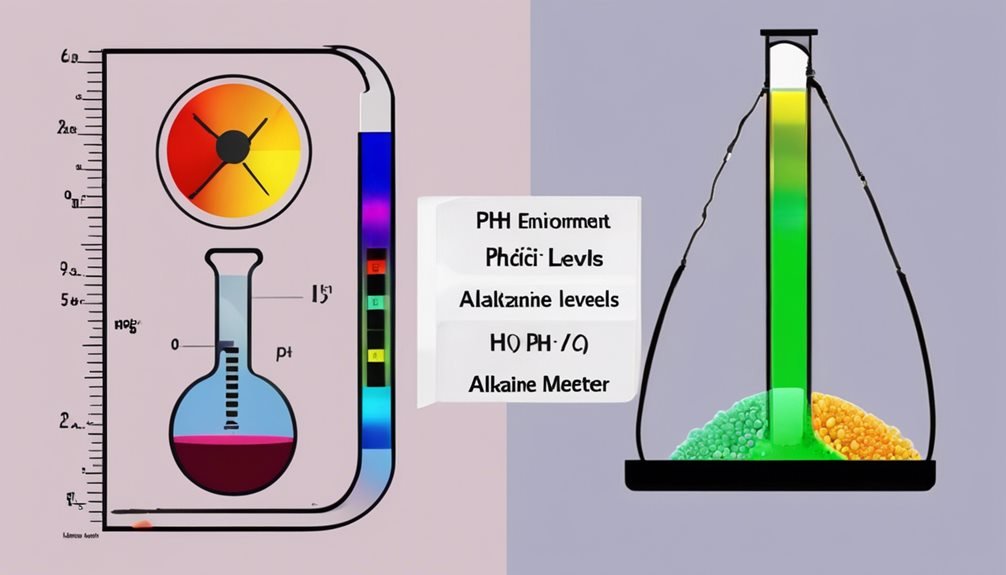
Pivoting from pH levels' impact on treatment efficacy, the distinction between acidic and alkaline environments in cancer therapy is a critical consideration. The tumor microenvironment plays a crucial role in cancer progression, with acidity often characterizing it.
Tumor cells exhibit altered cellular metabolism, leading to increased lactate production and a decrease in pH levels, creating an acidic milieu. This acidic environment promotes tumor growth, angiogenesis, and metastasis while impairing the immune response against cancer cells.
Conversely, an alkaline environment can hinder cancer cell proliferation and invasion. Studies suggest that modulating the pH levels within the tumor microenvironment can enhance the efficacy of cancer therapies.
Impact on Cancer Cell Growth
To understand how pH levels impact cancer cell growth, it's essential to delve into the intricate interactions between cellular acidity and tumor progression. When considering the impact of pH levels on cancer cell growth, several key factors come into play:
- Cellular Metabolism: pH levels can influence cellular metabolism, altering how cancer cells produce energy and grow.
- Tumor Microenvironment: The pH of the tumor microenvironment can affect cancer cell proliferation and invasion, impacting the progression of the disease.
- Acidic Conditions: Acidic pH levels in the tumor microenvironment can promote cancer cell growth and metastasis.
- Alkaline Environments: Conversely, maintaining a more alkaline pH may inhibit cancer cell growth and enhance the effectiveness of certain cancer therapies.
Understanding the intricate relationship between pH levels, cellular metabolism, and the tumor microenvironment is crucial in developing targeted therapies that can effectively impede cancer cell growth and progression. By addressing these factors, researchers can uncover new strategies to combat cancer at its core.
Ph Balancing Strategies

Balancing pH levels in cancer therapy involves implementing strategic approaches to regulate the acidic or alkaline conditions within the tumor microenvironment. Diet modification plays a crucial role in achieving this balance. Incorporating more alkaline foods such as fruits, vegetables, nuts, and seeds while reducing acidic foods like processed meats and refined sugars can help create a more alkaline environment, which may hinder cancer cell growth.
Lifestyle changes are also essential when aiming to balance pH levels. Regular exercise can improve circulation and oxygenation in the body, creating a less favorable environment for cancer cells to thrive. Stress management techniques such as meditation, yoga, or deep breathing exercises can also aid in maintaining a more alkaline pH.
Role in Chemotherapy Effectiveness
Understanding the impact of pH levels on chemotherapy effectiveness is crucial in optimizing cancer treatment outcomes. When it comes to the role of pH levels in chemotherapy response, the tumor microenvironment plays a significant part in determining the success of treatment. Here are four key points to consider:
- Chemotherapy Response: The pH levels within the tumor microenvironment can influence how well cancer cells respond to chemotherapy drugs. A more acidic environment may hinder the effectiveness of chemotherapy, leading to potential treatment resistance.
- Tumor Microenvironment: The acidity or alkalinity of the tumor microenvironment can impact the efficacy of chemotherapy drugs by altering drug uptake and distribution within the tumor.
- pH Modulation: Strategies aimed at modulating pH levels within the tumor microenvironment have shown promise in enhancing chemotherapy effectiveness and overcoming drug resistance.
- Personalized Treatment: Understanding the pH dynamics of individual tumors can help tailor chemotherapy regimens to optimize treatment outcomes and improve patient responses.
Ph Monitoring in Therapy
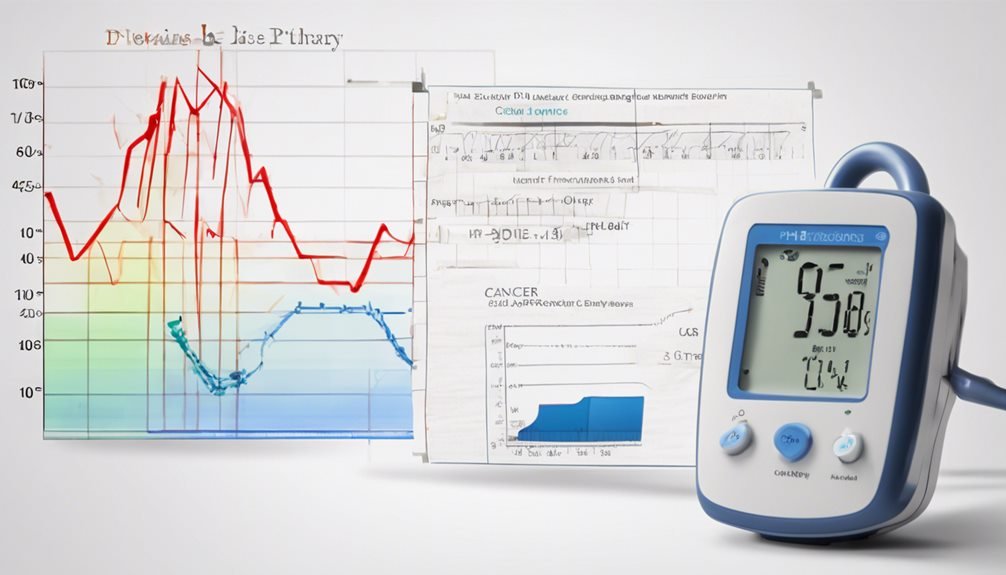
Monitoring pH levels during cancer therapy is a critical aspect of treatment optimization. By tracking tumor pH levels, healthcare providers can gauge treatment response and tailor therapies for better outcomes. Various pH monitoring techniques, such as blood tests, urine tests, and imaging scans, help assess the acidity levels within the tumor microenvironment. Research suggests that tumors with lower pH levels may exhibit resistance to certain treatments, highlighting the significance of monitoring pH throughout therapy.
Successful cancer therapy outcomes often correlate with maintaining optimal pH levels within the body. By closely monitoring these levels, healthcare teams can make timely adjustments to treatment plans, ensuring that the therapies remain effective.
Understanding the dynamic relationship between tumor pH levels and treatment response can lead to more personalized and targeted interventions, ultimately improving patient outcomes. Therefore, incorporating pH monitoring strategies into cancer therapy protocols is essential for enhancing therapy success and maximizing the effectiveness of treatments.
Alkaline Diet for Ph Balance
Maintaining a proper pH balance is essential for overall health, including during cancer therapy. When considering an alkaline diet to help balance pH levels, here are some key nutrition choices and lifestyle changes to keep in mind:
- Increase Intake of Fruits and Vegetables: Incorporating more fruits and vegetables into your diet can help alkalize your body, as these foods are typically more alkaline-forming.
- Limit Acidic Foods: Reduce consumption of processed foods, sugar, and excessive amounts of meat, as these can contribute to acidity in the body.
- Stay Hydrated: Drinking plenty of water helps flush out toxins and maintain a balanced pH level in the body.
- Manage Stress: Stress can lead to increased acidity in the body. Incorporating stress-reducing activities such as yoga, meditation, or spending time in nature can help maintain a more alkaline state.
Ph and Immune Response
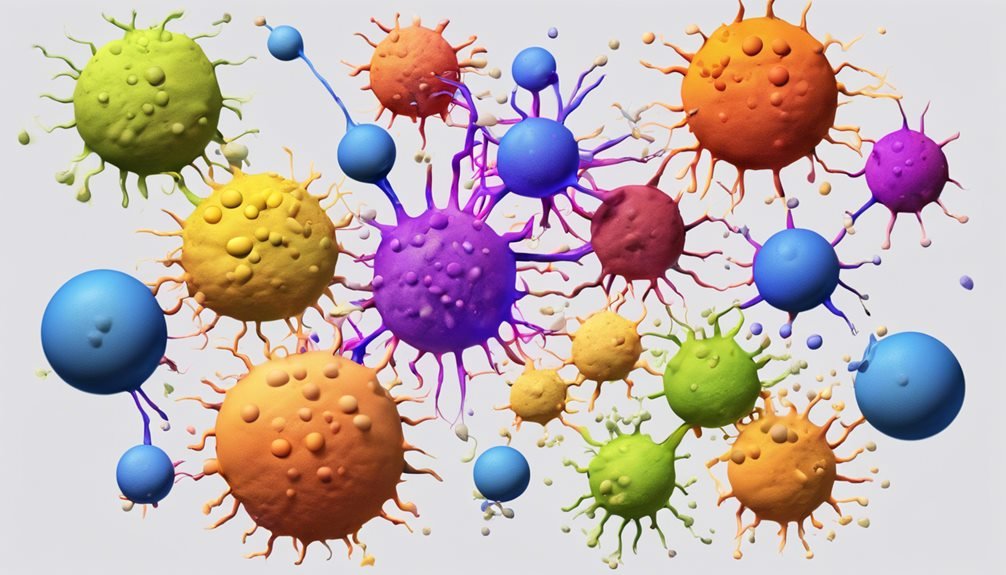
When considering the relationship between pH levels and immune response, it is crucial to understand the intricate balance that exists within the body. The pH of the tumor microenvironment plays a significant role in immune modulation, affecting the activity of immune cells in the fight against cancer. By creating a favorable pH environment, immune responses can be enhanced, leading to better outcomes in cancer therapy.
| pH and Immune Response | Impact |
|---|---|
| Acidic Tumor Microenvironment | Suppression of immune responses |
| Neutral pH | Optimal conditions for immune cell function |
| Alkaline Environment | Enhanced immune response against cancer |
Research indicates that an acidic tumor microenvironment can suppress immune responses, hindering the body's ability to combat cancer effectively. On the other hand, a neutral or slightly alkaline pH creates optimal conditions for immune cell function, allowing for enhanced immune responses against cancer cells. Understanding the interplay between pH levels and immune modulation is crucial for developing effective cancer therapies that harness the body's immune system to target tumors.
Acidosis and Cancer Progression
Analyzing the impact of acidosis on cancer progression reveals a complex interplay between the acidic microenvironment and tumor development. Acidosis, often present in tumors, can significantly influence cancer metabolism and overall disease progression. Here are key points to consider:
- Acidosis and Tumor Growth: Acidosis can promote tumor growth by altering gene expression and enhancing the survival of cancer cells within the acidic environment.
- Immune Suppression: Acidosis hinders the immune system's ability to recognize and attack cancer cells, allowing for unchecked tumor growth.
- Acidosis Prevention: Strategies to prevent acidosis in the tumor microenvironment, such as alkaline diet or specific medications, may help in slowing cancer progression.
- Targeting Cancer Metabolism: Understanding the metabolic adaptations of cancer cells to survive in acidic conditions can aid in developing targeted therapies to disrupt these pathways for more effective treatment.
Adjusting Ph for Optimal Outcomes
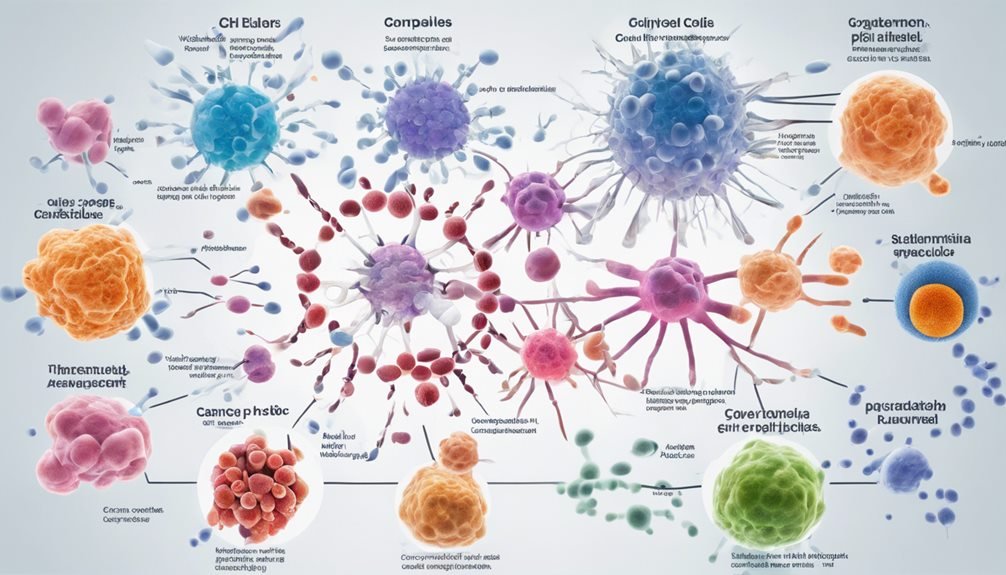
Shifting the focus towards adjusting pH levels for optimal outcomes in cancer therapy necessitates a nuanced understanding of how manipulating the tumor microenvironment can impact treatment effectiveness. Nutrition intervention plays a crucial role in this process, as certain foods can either increase or decrease acidity levels within the body. By incorporating a diet rich in alkaline foods such as fruits and vegetables, you can help create a more alkaline environment, potentially inhibiting cancer progression.
Additionally, metabolic regulation is key in adjusting pH levels, as metabolic processes can influence the acidity of the tumor microenvironment. Ensuring proper metabolic function through activities like regular exercise and adequate hydration can contribute to maintaining a balanced pH. Understanding how nutrition and metabolic processes affect pH levels can provide valuable insights into optimizing cancer therapy outcomes.
Ph Testing Methods
To effectively evaluate the pH levels crucial for optimizing cancer therapy outcomes, utilizing precise and reliable testing methods is essential. When it comes to determining pH levels in the context of cancer therapy, various measurement techniques and monitoring devices play a significant role. Here are four key points to consider:
- pH Measurement Techniques: Utilize methods such as pH meters, test strips, and color-changing indicators to accurately measure pH levels in biological samples.
- pH Monitoring Devices: Invest in advanced devices like electronic pH meters for continuous monitoring and tracking of pH changes during therapy.
- pH Level Correlations: Understand how pH levels correlate with treatment efficacy and the impact on cancer cells to tailor therapy accordingly.
- pH Balance Importance: Recognize the importance of maintaining a balanced pH environment to enhance the effectiveness of cancer treatments and minimize side effects.
Frequently Asked Questions
Can Ph Levels Be Used to Predict Cancer Recurrence?
Yes, pH levels can potentially aid in predicting cancer recurrence by indicating changes in the tumor microenvironment. This data assists in monitoring progression and assessing the effectiveness of treatment. By analyzing pH levels, healthcare providers can tailor therapies to individual needs, potentially improving outcomes.
Research suggests that understanding the role of pH levels in cancer biology may offer valuable insights into predicting remission and guiding treatment decisions for better patient care.
How Does Ph Affect the Side Effects of Chemotherapy?
When chemotherapy effectiveness is considered, it's crucial to understand how pH levels can impact its side effects. Research suggests that pH can influence the toxicity of chemotherapy drugs, potentially affecting a patient's experience during treatment.
Is There a Link Between Ph Levels and Metastasis?
Yes, there's a significant link between pH levels and metastasis. Tumor microenvironment plays a crucial role in cancer progression. Acidic niches within this environment can promote metastasis by enhancing the invasiveness of cancer cells.
Studies have shown that acidic pH levels can activate enzymes that break down the extracellular matrix, facilitating cancer cell migration to distant sites. Understanding and targeting pH levels could potentially help in controlling metastatic spread.
Can Ph Imbalance Contribute to Drug Resistance in Cancer Treatment?
When exploring drug resistance in cancer treatment, ph imbalance can indeed play a crucial role. The cellular response to certain drugs can be influenced by the acidic or alkaline conditions within the tumor microenvironment. This imbalance may hinder drug efficacy and promote resistance mechanisms.
Understanding how ph levels impact the tumor microenvironment's response to treatment is essential in developing more effective strategies to combat drug resistance in cancer therapy.
Are There Specific Foods That Can Reverse Acidic Ph Levels in Cancer Patients?
To reverse acidic pH levels in cancer patients, consider dietary interventions and natural remedies.
Foods like leafy greens, citrus fruits, and almonds can help balance pH levels. Consuming alkaline-rich foods and drinks such as green tea and certain herbs may also support pH balance.
Additionally, staying hydrated with water infused with lemon or cucumber can aid in maintaining a more alkaline environment within the body, potentially benefiting cancer patients.
Conclusion
So, now you know the importance of pH levels in cancer therapy. By understanding how pH impacts treatment efficacy, cancer cell growth, and immune response, you can make informed decisions to optimize outcomes. Remember, just like balancing your checkbook, keeping your body's pH in check is essential for maintaining health and fighting cancer effectively. Keep that pH in check, and you'll be well on your way to achieving optimal treatment outcomes.




